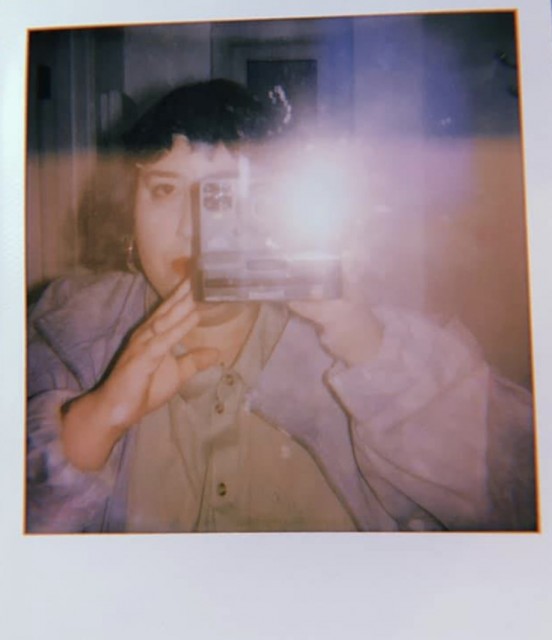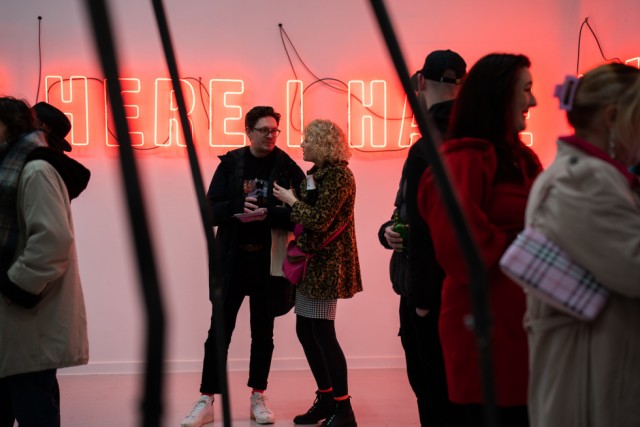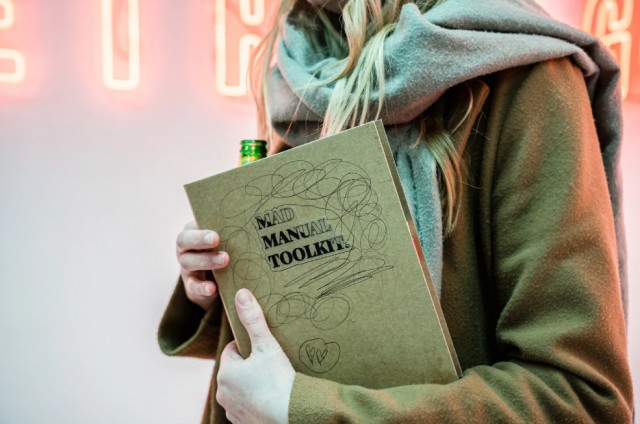Radically Empowering:
Lizz Brady on Art & Mental Health

“My girlfriend told me I should open my own gallery someday.” With plans for a new arts space in Liverpool and a crowdfunder launched to help get things off to a flying start, Mike Pinnington spoke with Lizz Brady about what led her here…
It’s getting on for a decade since I first spoke with artist and curator Lizz Brady about her project Broken Grey Wires. With a focus on the exploration of mental health through contemporary art, in an interview from 2015, Brady told me: “I want art to become a facilitator for recovery, and for Broken Grey Wires to encourage people to make something wonderful for themselves.”
Looking back, as someone who has had their own struggles with poor mental health, what I was most struck by was this explicit call for healing, and how interesting and refreshing I found it that a project like this existed. In the intervening years, Brady has continued to make challenging, ambitious exhibitions that foreground such issues. In addition, she has introduced resources and spaces into programming, for audiences to further explore feelings and thinking raised by art and artists.
Now, Brady is on the cusp of the next step in her journey, having recently announced plans for a new art space for Liverpool with ambitions “to become a dedicated centre of support for local and visiting artists in the North-West.” Excited by the prospect of a new and innovative arts space for the city, I spoke with Brady about her plans.
The Double Negative: We know you primarily as a curator and artist. What led to your decision to launch a new art space?
Lizz Brady: The morning after an incredible exhibition opening in September, I was having a stroll on the beach. It was 8am and the sun was already shining, it felt peaceful. I was exhausted after a very intense install week, and during a conversation with my girlfriend, she casually told me that I should open my own gallery someday soon.
I thought about it and started to passionately tell her all the things that I would love to do if I had my own space. I considered this over the next couple of weeks and decided it was to be the next step for BGW.
Were there any key inspirations for the idea?
A couple of years ago I discovered an incredible organisation in LA, called Junior High. They were a real positive catalyst for my thinking, about how to push BGW, how to encourage other spaces to follow similar ethos and how to be unapologetically compassionate.
I also learnt of an artist called Jeff Kasper in New York who is doing inspiring work, often asking the question ‘what does support look like?’. I have been very motivated by his work.
Kaiya Waerea is an artist living in London. On her website, she starts her creative statement with – ‘I am a chronically ill writer, designer, and publisher.’ This was really influential to my thoughts as well.
I want to create a space where we can collaborate, through art, exploring our mental health, communicating our illness and our sickness. I am mindful of the language I am using, and I am excited that our vocabulary is expanding to include more radically empowering rhetoric.

Why Liverpool?
I currently live half-way between Liverpool and Manchester. I had a decision to make in terms of the city I chose to take the project to.
I was born on Merseyside (although left when I was young when my mum got a job in Yorkshire). I returned for every Everton game, having a season ticket for many years, alongside my dad. He recently passed away, and although difficult right now, being in the city to watch the game has brought back so many beautiful memories for me.
Where do you see it sitting within the city’s current visual arts landscape?
Liverpool already has a brilliant creative scene with many great institutions like the Tate, Bluecoat, Walker, FACT. I hope to build positive relationships with the city art spaces and discuss how we can utilise collaboration and shared ideas to better assist our community.
BGW will continue to support communities to engage with art and creative projects to better understand their own mental health. By opening this gallery space, I hope to bridge the gap between high quality contemporary art and mental health services.
I want to provide opportunities to people to be experimental and innovative, encouraging artists to push boundaries and create ground-breaking work. Using theory, activism and lived experiences of mental illness to explore the history, cultures, and the politics of madness.
I want there to be that focus on our mental health, to explore it deeply through creativity, to enable us to manage this with understanding and empathy.
Why now?
The time just feels right. As I said, I have worked in other galleries for many years, using spaces as almost mini residencies. But it sometimes feels like there isn’t enough traction to dig a little deeper and focus on a community to really figure out how to offer support. I think that with our own space, we can achieve greater things.
Bringing exceptional art and artists to Liverpool, in a contemporary gallery setting, whilst also exploring experimental accessibility and community engagement, we’d be bringing the two together with equal focus.

All of what you’ve done with Broken Grey Wires has been informed by and put mental health front and centre. How will this guiding principle be manifested in the new space?
Alongside the exhibitions that I have curated over the years, I have ensured that access, in some way, has been considered. With last year’s projects, I focused on the development of the BGW toolkit and the Comfort Zone space.
Within our own space in Liverpool, the Comfort Zone will be a permanent feature in the gallery. A room to use for recovery, relaxation and rest. Art in the exhibitions can often be triggering, and so it is vital that we provide this area for audiences. Sofas, armchairs, low lighting, blankets, zine library… these are some of the things we have provided in the past.
I want to invite certain groups in the city to help design the Comfort Zone and to have a new vision for it every six months or so. Ensuring we keep developing these ideas of accessibility and learning from others by listening and working together.
It doesn’t sound like a straightforward gallery – more gallery +. What’s your vision for the space?
I want to focus on developing a positive rhetoric for mental health conversations and this is now an opportunity to become a dedicated centre of support for local artists and visiting artists in the North-West, creating our own hub, our own radical, experimental space.
In terms of the art in the gallery, it will be similar to how I go about that now. Research into a specific topic, thought or idea and slowly develop a curatorial blueprint based on the artists that I think fit.
Alongside the exhibitions, we will also offer regular creative workshops, collaborating with diverse exciting leaders within their sector. Drop-in sessions for a relaxing social experience, our own podcast ran from the space and a book club.
Can you say anything about your plans for the exhibitions programme?
There are a number of artists that I am in touch with, in terms of a new exhibition, although I likely need to keep those cards close to me right now! But I can say that some of these artists include pioneers of conceptual and queer art, working class photographers, influential performance artists and an artist with a Netflix documentary (!)
As told to Mike Pinnington





